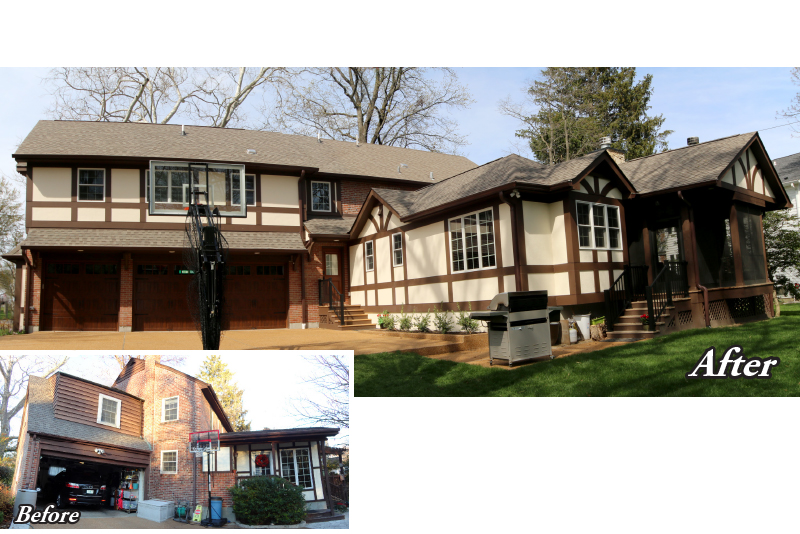
It is not uncommon for a homeowner’s family to outgrow their home or for a family to need additional functionality added to their home. Their needs can change over time and it is often necessary for homes to adapt.
A home addition or expansion offers a solution to these challenges. The other option is to sell the existing home and buy a new one. In today’s extreme St. Louis real estate market, selling the home that no longer meets your needs is easy; but finding a new one? Good luck. Competition among home buyers is fierce, inventory is low and as a result, prices are currently sky-high.
Considering the market and balancing it against your growing needs, an addition to your current home may be the way to go. Additionally, a well-executed addition can not only address your needs today, it can also add value to your home when you sell it in the future.
Getting home additions done and getting them done professionally, in a way that is beneficial today and in the future, takes careful thought and smart planning.
Home additions can be divided into four common types:
Conventional Home Additions
A conventional house addition is usually added to the side of the existing structure and may include one or more rooms. Some additions also involve a second story being added to a ranch type home.
Often, homeowners will add a great room, a family room, bedrooms and/or bathrooms. As most homes are originally built with their kitchens as a central feature in terms of layout, most additions do not include a new kitchen. Some will, however, include an expansion of an existing kitchen or dining space.
A well-designed and executed house addition should flow seamlessly into the original structure and not appear to be “added on” to the home.
Accomplishing this requires homeowners having a clear vision of their objectives for the addition, expert architectural work, engineering which contributes to the execution of the design and experienced construction personnel who can blend the old and the new smoothly.
Single Room Additions or “Bump Outs”
Many homeowners need an additional bedroom, a great room, or a larger dining space rather than a massive addition project that doubles the square footage of their home.
In these cases, a single room addition or “bump out” can be a relatively affordable, simple undertaking. These can be small, adding 50 square feet to a dining area, for example. But with smart architectural work, they can have a major impact on the look and functionality of a home.
While these may be less complex projects than a multi-room addition, they still must comply with building codes and be granted permits prior to construction.
Garage Conversions
At first glance, converting an attached garage into a great room, bedroom or family room may seem to be simple. After all, the basic structure of the room is in place, and many garages are built with drywall installed.
However, these conversions often have inherent challenges. For example, many garages do not have HVAC ductwork. Most have single door access with no easy way to install a larger opening to the new room, something that is a must have for those interested in an open floor plan. Many garage floors have cracks in their concrete.
It’s also important to remember that the garage conversion – which can be pricey – means the home’s existing two- or three-car garage will be gone. Since most buyers want a garage with their home, this may not increase the value.
Of course, the garage space lost to the conversion can be replaced with a new garage, but that can be a costly project and one that could be difficult to execute if the home’s lot doesn’t allow a new garage to be situated with adequate access to the street.
Sunrooms
Sunrooms or Four Seasons Rooms are typically the least complex and easiest additions to add to a home. Sunrooms may also have the most flexibility in terms of design and appearance since they don’t usually have to match the existing structure.
While they do offer additional enclosed space, often making a deck or patio-type area less susceptible to hot, cold or wet weather, they don’t include HVAC or plumbing, which limits their use.
Sunrooms add value to a home as a “nice-to-have” feature, but since they are somewhat limited in terms of their options, they will usually add less value than a full addition or a single room bump out.
Home Additions Are Important—Take the Smart Approach
Home additions can be a homerun in terms of functionality and added value. They can also be a strikeout.
The goal is to build an addition that blends in seamlessly with the existing home’s architecture, materials and overall appearance. Design matters and execution is key. A badly designed and/or executed addition will look exactly like an add-on, which can be a negative when it’s time to sell.
Using a Design-Build Firm is a good idea on most construction projects, but doing so for an addition is an especially good idea.
Project coordination for architectural work, design, materials procurement, construction and project management can make all the difference for these often challenging projects. A Design-Build firm means you are dealing with one company who handles the entire project from start to finish.
Contact Agape Construction today for a complimentary consultation on your addition or other residential construction project.






